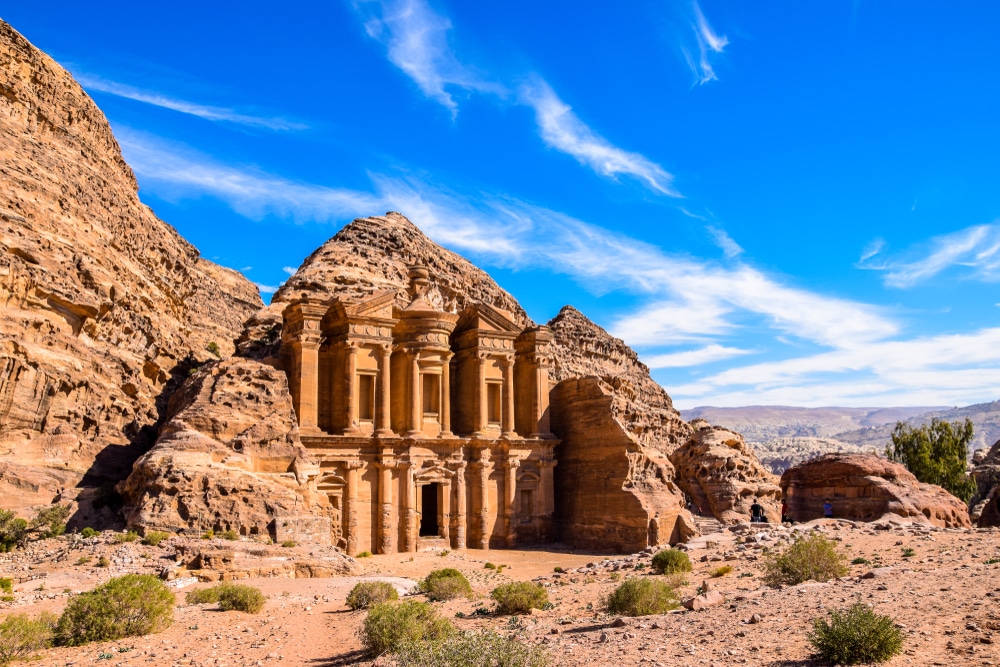
The Kingdom of Jordan is currently still one of the “insider tips” among travel destinations, because many Germans are concerned about traveling to Jordan in view of the political situation in the surrounding areas or have simply not heard of the country between the Dead Sea and Iraq.
Jordan has extremely hospitable people, thousands of years of history with wonderful historical sites, delicious dishes, a very varied landscape and so much more to offer. Almost 10 million people live in Jordan whose official language is Arabic. The country’s largest international airport is located in the capital Amman, a direct flight from Germany takes about 4 hours.
Amman – Capital of Jordan
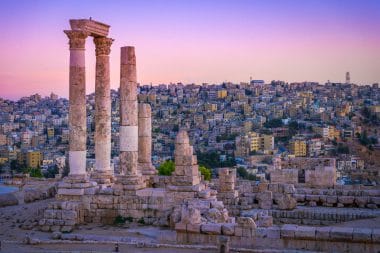
Most travelers reach Jordan via the airport in the capital Amman. Many people head straight from there to the numerous sights further away, even though Amman itself is more than worth a visit.
The Jordanian capital has transformed into a modern metropolis in recent years and shows the country’s eventful history. The tourist highlight of the city is the very well preserved and lovingly maintained Roman amphitheater from the 2nd century AD, which was built into one side of the Jaufa hill. In the summer months, there are also regular performances and events that bring the millennia-old theatre back to life. In the rest of the city, too, numerous contemporary witnesses from the time of the Romans can be discovered, including an ancient citadel and the Temple of Hercules.
In addition to sightseeing, a visit to Amman is also an excellent way to get in touch with the country and its people off the beaten track. The Jordanians are a very hospitable people and so it can happen that they are invited to tea directly after a nice conversation.
Rock City Petra
The rock city of Petra is by far the most famous and therefore also the most touristically developed attraction in Jordan and makes many a visitor lose words due to its size and splendour. You can reach the rock city, which has been a UNESCO World Heritage Site since 1985, through a 1.2 kilometer long and 80 meter deep gorge, at the end of which the temple complex of red rock opens up.
The more than 800 buildings and sacrificial sites of the rock city are built directly into the red sandstone and decorated with extremely detailed decorations. Special highlights of the Petra Valley are the Pharaoh’s Treasury: a monumental funerary temple whose entrance is adorned with gigantic columns, and the Roman Theatre: a theatre carved directly into the rock with 3000 seats.
Crusader Castle of Kerak
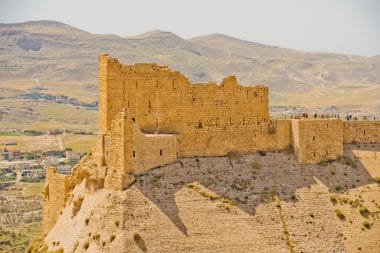
The city of Kerak is located in the western part of the country and has always been an important settlement and seat of numerous rulers. A particularly impressive witness to these times is the ruins of the Crusader castle, built between 1142 and 1161.
Shortly after its completion, this position of the Crusaders was attacked and besieged, but it was not successfully taken until 1187 by Saladin’s army, which marked the end of the Crusaders in the Middle East. From the middle of the 13th century until the end of the First World War in 1918, the fortress was then in Turkish hands.
In 2008, the ruins were extensively renovated and restored and have since become an increasingly popular destination for visitors. The fortress is perched on a rocky outcrop, so you can enjoy a great view of the surrounding area from above. Inside the castle there is a small archaeological exhibition that shows finds from the different eras that the castle has lived through.
Mount Nebo
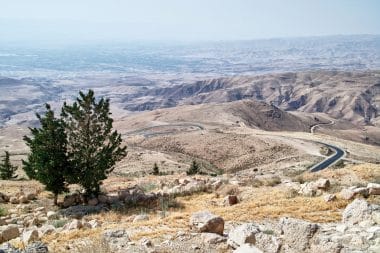
Also located in the western part of Jordan is Mount Nebo. It is known as the place in the Bible from which Moses was able to see the Promised Land for the first time. Today, the mountain has become a popular destination for visitors because of this biblical passage, as well as because of the incomparable view over the Dead Sea and the Jordan Valley to neighboring Israel.
On the mountain there are also the remains of an ancient church from the 3rd century AD. and some very well preserved mosaic panelling, which can be seen in a small museum. Not far from the mountain is the mosaic city of Madaba, which is also mentioned in the Bible. A visit to St. George’s Church, which is decorated with numerous ancient mosaics, is particularly worthwhile here.
Wadi Rum
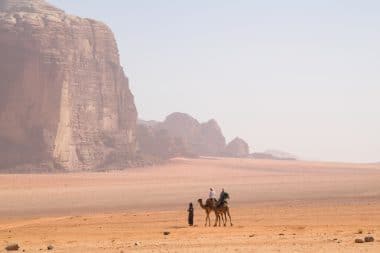
In the south of Jordan is Wadi Rum, a desert landscape that was created from a dried-up river. This 100-kilometre-long desert of red sand and rock impresses not only with its unreal landscape, but also with rock carvings from prehistoric times as well as spectacular sunrises and sunsets. In 2011, the landscape of Wadi Rum was declared a World Heritage Site and today attracts numerous visitors from all over the world. The highest mountain in Wadi Rum is Jebel-Um-Dami, from whose 1800-meter-high summit visitors can see as far as the Red Sea and the border of Saudi Arabia on a clear day.
Dead Sea
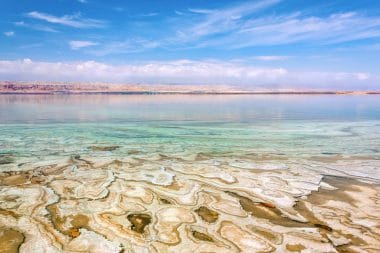
The Dead Sea is one of the most impressive landscapes in Jordan, along with Wadi Rum. With a salinity of over 300 grams per liter of water, the Dead Sea is one of the saltiest waters in the world. The density of the water here is so great that a person can float on the surface without sinking. The Dead Sea is located on the border with Israel in one of the deepest depressions on earth, far below sea level and is actually a lake. There are numerous spa and wellness offers around the Dead Sea, because the soils and minerals from the lake play a major role in the cosmetics industry.

